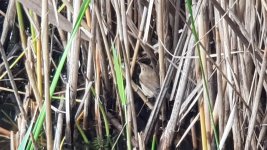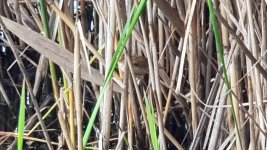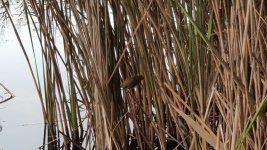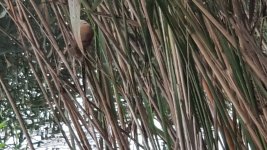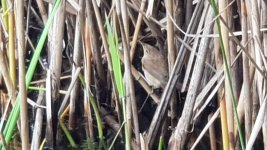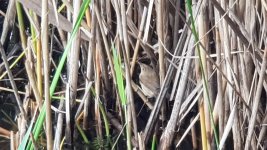
This photo was taken on the 19th of August 2021. The bird was seen in a moderately extensive reedbed at a clay-pit lake. Surrounding habitat included some trees, with few bushes and no tall grass in the vicinity. I haven't recorded any calls. Only now did I notice an apparently shortish primary projection in the bird (the tip of its left wing forms a slight notch on the reed blade right behind the bird). It also had a rather flat forehead and a short supercilium that didn't extend beyond the eye-ring. Could it be a Blyth's reed warbler? Apologies for the photo quality (it was taken with a cell phone).
EDIT: Known reed warblers present at the site include great reed warblers, Eurasian reed warblers and icterine warblers, which might give you additional information about the habitat.
EDIT: Known reed warblers present at the site include great reed warblers, Eurasian reed warblers and icterine warblers, which might give you additional information about the habitat.
Attachments
Last edited:




